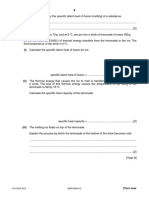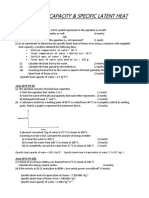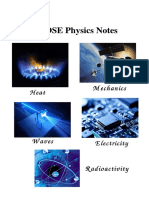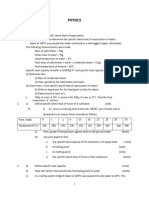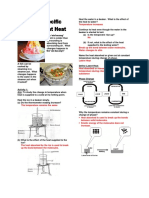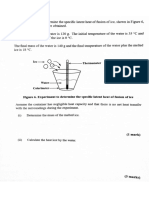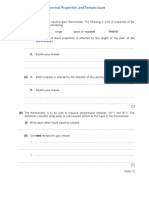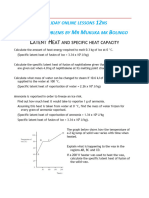0% found this document useful (0 votes)
187 views2 pagesPhysics
This physics homework assignment from an Arab unity school for 11th grade covers thermal properties of matter. It contains 9 questions about concepts like specific heat capacity, latent heat of fusion and vaporization. Students are asked to define these terms, describe methods for finding specific heat capacity, and solve calculations involving thermal energy transfer and phase changes of substances like iron, water and ice.
Uploaded by
Sami AftabCopyright
© © All Rights Reserved
We take content rights seriously. If you suspect this is your content, claim it here.
Available Formats
Download as PDF, TXT or read online on Scribd
0% found this document useful (0 votes)
187 views2 pagesPhysics
This physics homework assignment from an Arab unity school for 11th grade covers thermal properties of matter. It contains 9 questions about concepts like specific heat capacity, latent heat of fusion and vaporization. Students are asked to define these terms, describe methods for finding specific heat capacity, and solve calculations involving thermal energy transfer and phase changes of substances like iron, water and ice.
Uploaded by
Sami AftabCopyright
© © All Rights Reserved
We take content rights seriously. If you suspect this is your content, claim it here.
Available Formats
Download as PDF, TXT or read online on Scribd
/ 2
